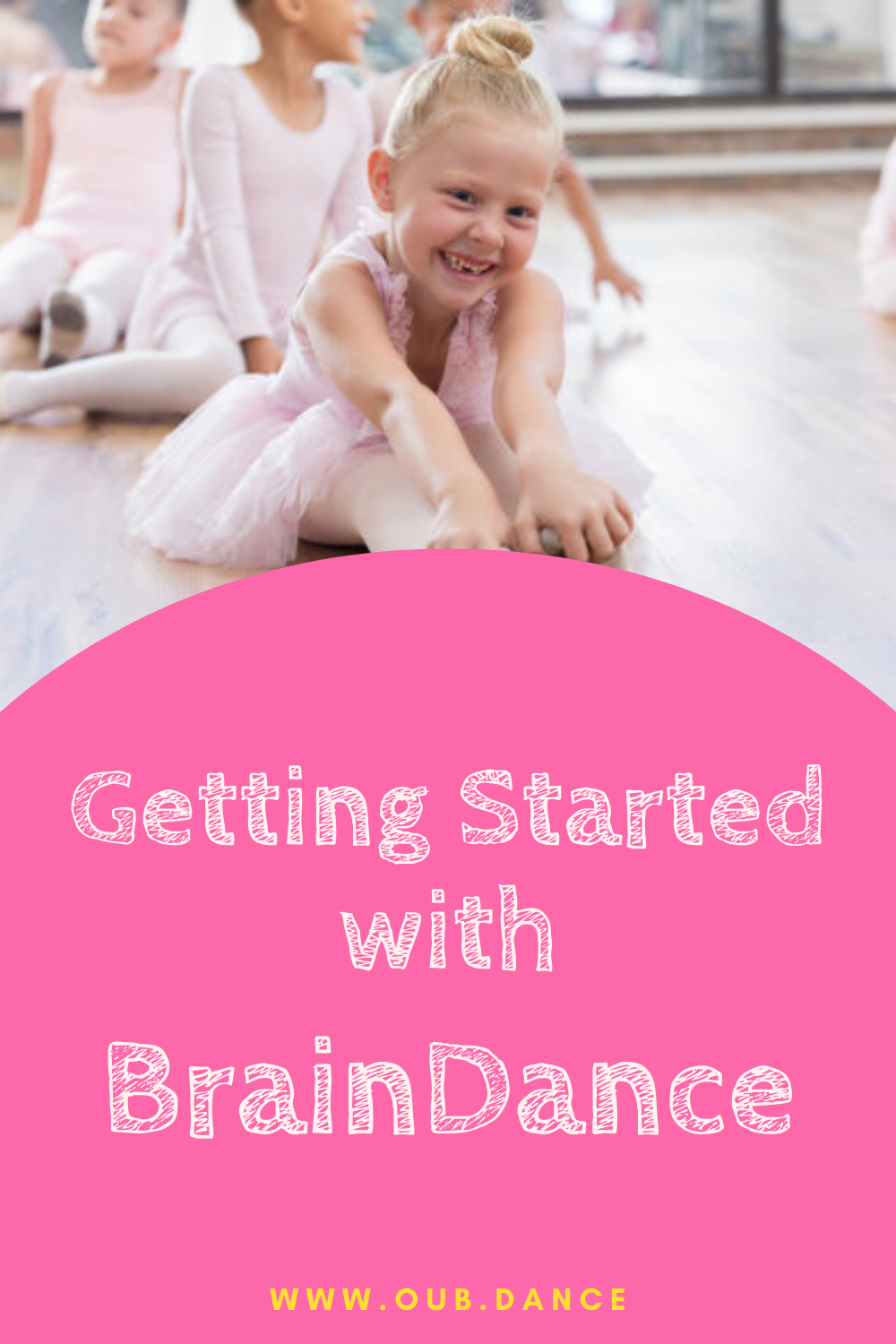Getting Started with BrainDance
BrainDance
You’ve likely heard the term “BrainDance” before, but what exactly is a BrainDance? And does it differ for toddlers and preschoolers when compared with older children?
What is a BrainDance?
BrainDance is a body and brain warm-up that was first developed by Anne Green Gilbert. (By the way, her books, Brain-Compatible Dance Education and Creative Dance for All Ages are jewels when it comes to this topic. I am in no way affiliated with Gilbert, but if you’d like to learn more on the topic, I encourage you to look up her work.)
According to the Creative Dance Center, “BrainDance is a full body-brain exercise based on developmental movement patterns that healthy human beings naturally move through in the first year of life. These movements help to integrate reflexes that are the foundation for healthy brain development. The movements develop our whole brain (brain stem, midbrain/limbic system, and cortex).”
Getting Started with a BrainDance
Let’s break that down.
The BrainDance moves through a series of movement patterns babies do in their first year of life. What do babies do first? Breathe! It begins with a breath pattern, followed by tactile stimulation (or touch pattern). What I love about the tactile pattern is that it can integrate proprioception which can help develop body awareness. When you tap or brush or pat your arm, for example, you’ll be much more aware of your arm, where it is on your body and in space for a period of time that follows. Developing a sense of body awareness is so important for dancers of any age.
These patterns are followed by a core-distal pattern and a head-tail pattern, incorporating full use of the spine and limbs. We then move on to a pattern using the upper and lower body halves and a pattern using body sides. These are great for early childhood development because they takes body awareness to another level. Toddlers and preschoolers are still learning how their bodies work, and that includes the relationships their body parts have with each other. Young children are still perfecting their use of top vs. bottom and right vs. left when it comes to their coordination and perception of their bodies.
A cross-lateral pattern is next. This involves crossing body quadrants (for example, your right hand reaching toward your left foot) and spiraling movements. Cross-lateral movements can take A LOT of coordination from very young children mainly because their brains are still developing. Skipping is an example of a gross cross-lateral movement. These types of movements aid in the development of higher-order thinking skills.
BrainDance ends with a vestibular pattern, which is all about balance—not just staying on balance, but also the feeling of being off balance. Rises, falls, tilting and spinning are all movements that can be included in a vestibular pattern. Leaping, hopping and skipping can as well.
For review, BrainDance moves through patterns of movements for breath, tactile stimulation, core-distal, head-tail, top-bottom, body sides, cross-lateral, and vestibular patterns.
BrainDance for Toddlers and Preschoolers
If you want to incorporate a BrainDance into your class, it works best as part of a warm-up—during circle time, for example. It’s great for preparing your students for thinking, moving, and paying attention.
And don’t feel like you have to overhaul your entire warm-up and replace it with a BrainDance. You can start small. Begin by incorporating a breath pattern in your warm-up. Later, add a tactile pattern. Then core-distal. Then head-tail. You might even be able to make a few tweaks to warm-up activities you already do! Exercises like “hide and seek” and “happy cat, scared cat” already explore the core-distal pattern and head-tail pattern.
For toddlers and preschoolers, I’ve found that using images and creating stories is very effective in getting them better execute the activity. In our breath pattern, for example, children to take slower, deeper breaths. They benefit from increased oxygen to the brain, helping them to relax and focus. This also helps our brains to make more neural connections and grow more nerve cells—especially in the area of our brains where learning takes place and memories are stored. This can boost attention, memory, cognitive function, and even mood!
Happy Dancing!
Ashley Hartford
Founder + Owner, Once Upon a Ballet
Want to know more about me?
Get a FREE Dance Activity Pack
Freshen up your toddler and preschool dance classes with this set of fun and imaginative dance activities!
What We’re All About
At Once Upon a Ballet, we want to help you teach dance in a way that sparks your students’ imaginations, keeps their attention, and has them leaving class excited for what’s next.
DANCE CURRICULUMS
Our complete curriculums for toddler and preschool dance and children’s ballet give you a full year of lesson plans for each age group. Our lesson plans are rooted in child development and teach dance through imagination and play. We strongly emphasize correct, age-appropriate ballet techniques for young children, as well as building self-esteem, creativity, problem-solving, and classroom skills.
CERTIFIED TEACHERS
If you teach toddler or preschool dance, our teacher certification course gives you the tools to better connect with your littlest students, keep their attention, and have better classroom behavior.
LICENSED STUDIOS
For our licensed studios, we provide branding and marketing support to help them grow their classes that use our curriculums.


